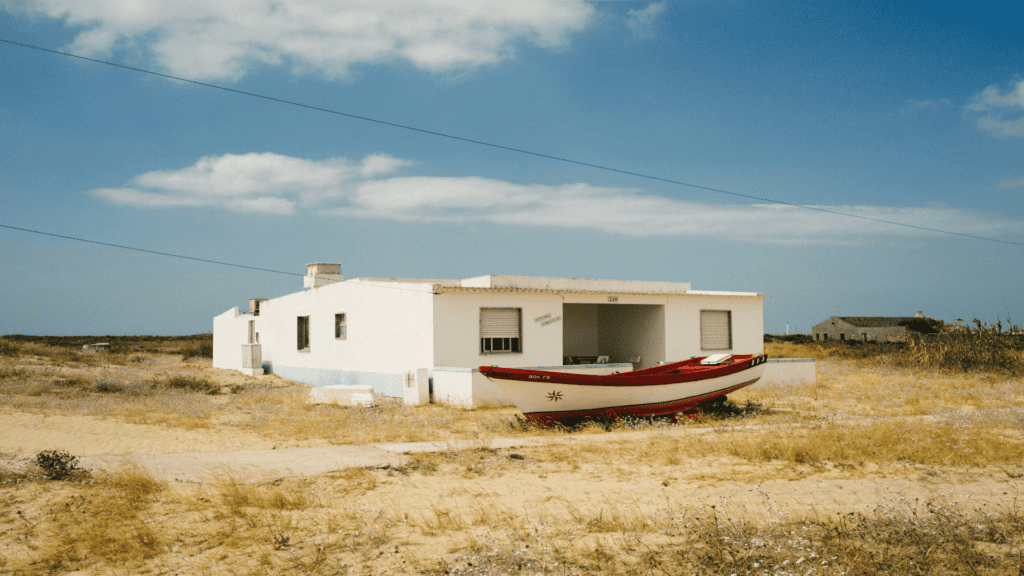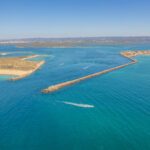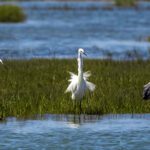The Algarve in southern Portugal is a region defined by its coastline. For centuries, the sea has shaped the way of life for the people here, influencing our traditions, cuisine, and economy. From the bustling harbours of Lagos and Faro to the tranquil inlets of the Ria Formosa, fishing has long been at the heart of our local culture. This maritime heritage is still very much alive today, reflected in the fishing communities, seafood markets, and our own Faro boat trips to Ria Formosa!
One of the most iconic vessels to emerge from this seafaring tradition is the saveiro — a fishing boat designed to navigate both open waters and the protected lagoons of the Algarve. In this blog, we take a closer look at these traditional boats, their place in our culture, and more.
Scroll down to get started! And if you have any questions for the Formosamar team, please just get in touch for the answers you need.

What Are Saveiros?
Saveiros are a testament to the ingenuity of Algarve’s fishing communities. These boats were designed to meet the specific needs of local fishermen, enabling them to work efficiently in varying marine conditions.
Saveiros Design
Saveiros are small to medium-sized vessels with a broad beam, shallow draft, and often a sharp bow. This combination of features provides excellent stability, allowing them to navigate both the open Atlantic and the calmer waters of estuaries and lagoons. Their shallow draft is particularly useful for moving through the intricate waterways of the Ria Formosa, where deeper-hulled vessels would struggle.
Be sure to read our Essential Guide to Ria Formosa Natural Park when you have finished here to learn even more about this special sanctuary in southern Portugal.
Saveiros Materials
Traditionally, saveiros are made of wood, reflecting a deep-rooted boat-building tradition in the Algarve. The use of durable, locally available timber ensures longevity and resilience against the often unpredictable sea conditions. Skilled artisans, many of whom have inherited their craft through generations, construct and maintain these boats with great care, ensuring that the knowledge of traditional shipbuilding does not fade away.
Saveiros Usage
Saveiros have primarily been used for nearshore fishing, a practice that has sustained coastal communities for centuries. Their versatility makes them ideal for different types of fishing, from setting nets to collecting shellfish. Over time, these boats have also been repurposed for recreational and tourism activities, allowing visitors to experience the Algarve’s waters aboard these historic vessels.
Our city is the capital of the Algarve region, so there’s plenty to explore on land too. Find out more about the 10 top-rated tourist attractions in Faro, Portugal and start planning your itinerary!

The Cultural Significance of Saveiros in the Algarve
Saveiros are far more than just fishing boats; they are symbols of the Algarve’s maritime culture. For many generations, these vessels were central to the survival and prosperity of coastal communities, providing food and economic stability. The sight of a saveiro gliding across the water is a visual link to the past, reminding us of the centuries-old relationship between the Portuguese people and the sea.
Throughout the Algarve, festivals and events celebrate the region’s maritime traditions, and saveiros often take centre stage. From regattas showcasing traditional boats to local festivities honouring fishermen, these gatherings reinforce the importance of maintaining this part of the region’s heritage. For example, in coastal towns like Olhão and Tavira — both of which feature in our Guide to the Towns in the Algarve — summer festivals frequently feature traditional boats in parades, races, or exhibitions, drawing both locals and visitors who appreciate the beauty and history of these vessels.
Beyond festivals, saveiros are also depicted in Algarvean art, photography, and literature, solidifying their status as cultural icons. They serve as a reminder of a time when the rhythm of life was dictated by the tides and the fortunes of the fishing industry. Preserving these boats means keeping alive the stories and craftsmanship that define the Algarve’s identity.

Are Saveiros Still Used in the Algarve Today?
In modern times, the number of active saveiros has declined. Advances in fishing technology and the growing demand for more efficient, motorised vessels have led many fishermen to replace traditional boats with modern alternatives. Additionally, the cost of maintaining wooden saveiros is significantly higher than that of fibreglass or aluminium boats, making them less practical for commercial use.
However, organisations like Formosamar are committed to keeping these traditional boats afloat — both literally and figuratively. By restoring and maintaining saveiros, we ensure that they remain a part of the Algarve’s maritime landscape. But this restoration is hard work! Boats built from wood need ongoing maintenance and annual repair. After the boat is taken out of the water, it needs to dry for a couple of days. We then sand off the old paint before applying the first coat of new paint. Next comes the application of anti-fouling. The boat then goes back into the water and is ready to explore the channels of the beautiful Ria Formosa once again.
Ready to start planning your adventure in the south of Portugal? Read our blog What is the Best Time to Visit the Algarve? and find out what time of year works best for you.

Explore Ria Formosa with Our Boat Tours from Faro!
We hope you’ve enjoyed this introduction to saveiros! If you’ve got a newfound urge to hit the water and explore the Ria Formosa, we’re here to help. Browse our range of Faro boat trips to Ria Formosa and find the perfect fit for your needs.
And if you have any pre-booking questions, please feel free to contact us for the information you need.







